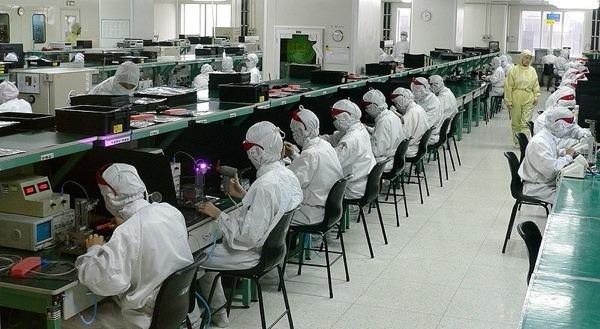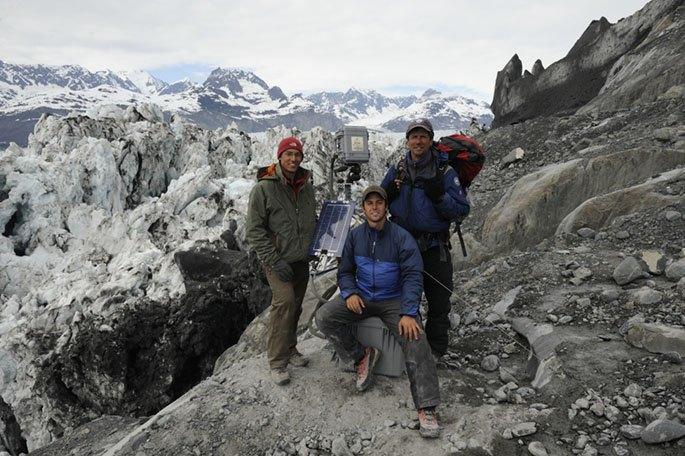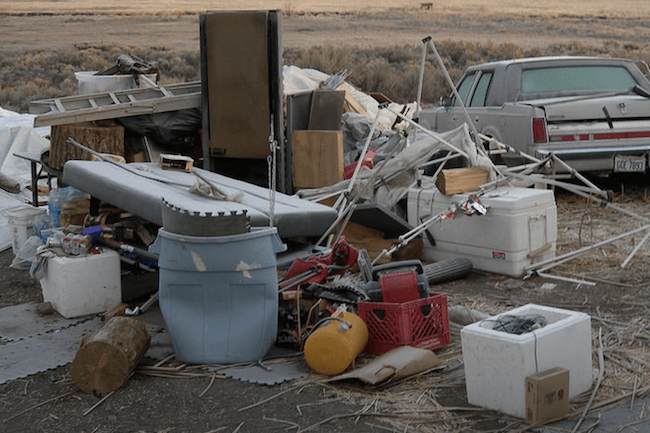Are Your Electronics Socially Responsible?


By Niclas Rydell
It’s hard to believe, but as recently as the late 1990s, IT purchasers had a fairly straightforward task. Sure, equipment had to meet price, performance, functionality and compatibility requirements. But the ultimate goal was simply for stuff to work, and for users not to complain.
Since then, purchasing computers and other electronics has gotten a good bit more complex. At first, concerns about emissions prompted IT manufacturers to implement health and safety measures. At the dawn of the new millennium, we began to worry about environmental impacts, ushering in the green manufacturing era.
Then, about five years ago, the sustainability movement emerged, putting a sometimes harsh spotlight on the ethical aspects of producing and using electronics. Today, more and more purchasers understand that sustainable products aren’t just supposed to be good for the environment. They’re asking bigger questions, like “Was it manufactured by forced or child labor?” or “How were conditions in the factories?”
Some problems that plague IT production – like blocked fire exits or malfunctioning safety equipment – are relatively easy to solve. But the issues go much deeper. From migrant workers who have to pay for the privilege of serving as modern-day forced labor, to using student workers for menial tasks under the guise of education, to extreme overtime -- the human costs of IT manufacturing can be staggering.
As organizations work to meet sustainability standards across their entire supply chain, they’re taking a hard look at the socioeconomic impacts of the electronics that form the backbone of their business. And they’re holding their vendors to ever-higher expectations.
The new era of sustainable electronics
As critical as environmentally sustainable purchasing is, it’s no longer enough. Today, responsible governments and businesses are also measuring the social impact of the electronics they purchase, with a view to driving long-term improvements in working environments and conditions.
This evolution began in Europe and is gaining momentum in the U.S. What’s driving the shift? It starts with savvy consumers and shareholders who want the organizations they do business with (and invest in) to share their values. But it’s also being driven by municipalities that have passed related legislation, and by procurement managers who care deeply about these issues.
These forward-thinking purchasers are now looking at ways to streamline the process of verifying that their products meet certain criteria. Third-party certifications have done that for years on the environmental front, but until recently, tracking socially responsible aspects of product manufacturing has been challenging.
Fortunately, that’s changing. My company, TCO Development, is currently the only certifier of electronic products based on both social responsiblity and environmental standards, but nonprofit organizations like the Sustainable Purchasing Leadership Council (SPLC) are accelerating the process by helping leaders prioritize opportunities to influence the socioeconomic impacts of purchased goods and services.
Certifying social responsibility
Certifying a product to environmental criteria is fairly straightforward. You take a product, you test it and you see if it includes environmentally dangerous substances, whether it’s recyclable, etc. Once the product has been verified, there is little risk that it will change.
But certifying a product for socially responsible manufacturing or human rights is fundamentally different. We have to be able to verify that these standards are being met on an ongoing basis. And while this kind of certification isn’t yet common, the global community has already established clear manufacturing standards.
In order for IT products to become TCO Certified, they must conform to:
- The International Labor Organization’s eight fundamental conventions
- National laws for worker rights, health and safety in the country of manufacture
- National laws for minimum wage and social security in the country of manufacture
- The U.N. Convention of the Rights of the Child
Certification works. Our audits and follow up verification have uncovered a critical need for change, and we're working with many factories to monitor their corrective action plans. We’ve been able to implement and push for changes in a way no one has been able to do before.
The bottom line is that, through TCO Certified, we’ve increased pressure on companies to get proactively involved in social issues, and to take more responsibility for the programs in their factories. Not surprisingly, these companies (and their factories) are improving much more rapidly than they would have without certification.
Weighing the costs
Ensuring that IT purchases are both environmentally and socially responsible does come with a cost. But calculating the real importance of social responsibility to an organization’s IT procurement strategy takes bigger – and longer -- thinking.
Every device we use in our workplace and at home has its own origin story, reflecting the factory where it was made, the way it was manufactured, and most important, the people who built it. With that story comes social and economic impacts that all manufactured products leave behind – consequences that can impact communities for generations.
By meeting criteria that consider the human impact of electronics purchases, organizations are aligning with the values and expectations of their customers, constituents, employees and shareholders. They’re not only building trust with these critical stakeholders, they’re fulfilling a higher mission on the global stage.
Image credit: Steve Jurvetson via Wikimedia Commons
Niclas Rydell is Product and Certification Director at TCO Development. To learn more about socially-responsible IT procurement, watch this webinar: Best Practice Sustainable IT Procurement.
The Future of Employee Benefits: Employee Giving Programs


By Nita Kirby
As we move through 2016, research continues to show that effective corporate giving programs remain beneficial to all key stakeholders, including the company, employee donors and the benefitting charities. Research suggests the presence of corporate philanthropy programs have the potential to increase revenue by up to 20 percent, reduce staff turnover by up to 50 percent, and can even have an effect on the overall mood and health of employees.
Employers continue to recognize the benefits of strong employee giving programs with over 80 percent of the participating companies and organizations agreeing or strongly agreeing that their company is committed to a giving program. Further, they indicate that employee giving remains a priority that impacts their ability to attract and retain talent with the key steps of finding the right fit and program set for your company.
The concept of signing up and giving to a cause that is both worthwhile and meaningful has been around more than two decades. Although times have changed, the idea of true options around corporate social responsibility (CSR) has come full circle. This evolution in support of broader programs not only includes the gift of money but the gift of time and the management of both of those processes through automation and technology.
Most potential employees, especially millennials ages 18 to 34, who will make up 50 percent of the workforce by 2020, expect their companies to have a mechanism to meet community needs as a staple. In fact, the 2015 Project ROI report found that 61 percent of millennials would rather work for a company that offers volunteering opportunities. This requirement has demanded that HRIS, employee wellness and other HR-related teams are focused on ensuring employees have a wealth of options that they can participate in; such as, a giving program, volunteer time off, skill-based and pro-bono volunteerism, and matching gifts.
So, how do you incorporate giving and volunteering into your employee benefit programs?
Giving employees these options is simple. We’ve outlined a few tips to get you started:
- Understand your audience: See what type of programs solicit the strongest interest from your employees through quick surveys. Survey tools like Qzzr, SurveyGizmo and SurveyMonkey are all free and easy to use!
- Identify a sponsor or advocate: Use the results of the survey to find an employee advocate to support the program and help introduce the new program to the rest of the workforce.
- Find the right partner: Team up with partners associated with providing software and services that offer an engaging, modern and user-friendly environment that allows you to speak to your employees in your own unique way.
- Get other teams involved: Don’t be afraid to get marketing, communications, compliance and IT involved. Use the resources you have to shine light on the philanthropic options being provided to your employees. You want your philanthropy programs to be supported, promoted and recognized by the entire company and what better way to do that then through your own people?
- Define your rules, nonprofit partners and what your company hopes to achieve -- not unlike any other program – identify key points to show value, how this program enables engagement and lifts up your company.
When it’s time to finally implement corporate giving programs, it’s important for employers to ask these questions:
- Are we informed about all possible charities that exist to fulfill the philanthropic interests of our employees?
- Which charities that are being considered for our company’s corporate giving programs are legitimate? How can we find this out?
- What is the safest way to facilitate employee giving? How do we give employees peace of mind that their donations end up in the right hands and their financial security isn’t hindered?
Workplace giving programs, as convenient as it would be, do not come together overnight. It takes a village to jumpstart them, a specialized village at that. That’s why so many companies today choose to outsource their corporate philanthropic endeavors to specialists, like JK Group, with vetting experts, compliance services and secure platforms that makes employee giving safe, easy and engaging. Whatever the case may be for your company, the attraction, engagement and benefits of a solid corporate giving program are evident. Make your employee benefit programs unique and effective with corporate giving programs. Start today!
Image credit: Flickr/asenat29
Ms. Nita Kirby serves as Director of Client Strategy and oversees JK Group’s strategic service management with a majority of its corporate clients. In addition, Nita is responsible for ensuring the success of philanthropic programs for many of JK Group’s key customers and oversees process improvements for how the company manages its client’s programs and relationships. This effort includes detailed benchmarking, employee engagement methodologies and financial modeling. Nita serves on numerous non-profit and volunteer boards and continues to stay engaged with the local non-profits community. Nita has worked for one of largest non-profits in the US, where she provided extensive support to some of the largest employee giving programs in the country. With a BS in Business Administration and vast experience in program development and administrative protocol, this experience has allowed Nita to incorporate best practice processes in each of her client engagements and focus on deliverables and client satisfaction. In addition, Nita is a Lean Six Sigma certified Green Belt providing her with expanded insight into how processes affect outcomes.
John Lewis partnership leads with employee-owned business model


by Vikas Vij - Employee ownership business models have increasingly attracted attention since the financial crisis of 2008 when corporate governance came to be recognized as a critical element to a company’s long-term survival. In the UK, the number of employee-owned companies has been rising at an annual rate of 10 percent; the U.S. is not too far behind with an annual growth rate of six percent.
John Lewis Partnership, which owns the UK grocery chain Waitrose, is an outstanding example of a company that has created a unique governance system where each of its 91,500 employees is a partner and gets a voice in the business they co-own. At John Lewis Partnership, founded in 1928 on the principles of co-ownership, corporate conscience andgovernance have been way ahead of their time.
High standards of corporate governance are at the heart of the Partnership. Its structure gives the management the freedom to be entrepreneurial and competitive in the way they run the business for long-term success, while giving the company's owners, the Partners, the rights and responsibilities of ownership through active involvement in the business, and have a share in its profits.
All Partners have a say in how they run the business and this is set out in the company’s Constitution. Freedom of speech is guaranteed through PartnerVoice, which is the local avenue for Partner opinion and is the means by which Partners can provide feedback, question management on branch matters, raise their own issues and be consulted.
John Lewis Partnership’s 2016 Annual Report and Accounts highlight the company’s sustainability achievements, including its exemplary performance in managing its own people. The company’s 91,500 Partners (employees) received a bonus of 10 percent– equivalent to more than five weeks’ pay.
The Partnership has strengthened its governance arrangements with the appointment of a sub-committee of the Board – the Corporate Responsibility Committee. This Committee will make recommendations to the Board in respect of the Partnership’s Corporate Responsibility policy and objectives.
The annual report showcases the company’s targets, priorities and achievements in 2015-16. It made an investment of £12,225,309 in community organizations, equivalent to four percent of pre-tax profits. The report also covers the company’s responsibilities to customers, suppliers, the environment and communities, and includes ‘Principle 1’ at its center – ‘the happiness’ of its employees or ‘Partners’.
Source: JLP
- See more at: http://www.justmeans.com/blogs/john-lewis-partnership-leads-with-employee-owned-business-model#sthash.q8PajgvN.dpuf
Institute of Corporate Responsibility and Sustainability announces first working fellows


The Institute of Corporate Responsibility and Sustainability has announced its first group of working Fellows. The six Fellows were chosen by a detailed review of their achievements to evaluate their commitment and contribution to the CRS agenda and to the long-term success of the ICRS. Beyond describing their personal impact and achievements, applicants were also required to outline their active engagement in supporting the CRS profession.
The six selected are Bridget Jackson (Director of Corporate Sustainability, PwC); Mike Kelly (formerly Head of Living Wage, KPMG); Sarah Morton-Ramwell (Partner, Global Head of Pro Bono & Corporate Responsibility, Ashurst); Dr. Dominic Tantram (Partner, Environmental Sustainability, Terrafiniti); Joss Tantram (Partner, Corporate Sustainability, Terrafiniti); Andrew Wilson (Director, Corporate Citizenship).
Claudine Blamey, Chair of the ICRS, said, “Offering Fellowship to the very best CRS practitioners strengthens the profession and the Institute. Those selected have a wide range of skills and experiences and over the course of their careers they have successfully addressed the broad spectrum of issues and challenges that confront those working in the sector.
The Institute of Corporate Responsibility and Sustainability (ICRS) is the UK’s professional body for those committed to responsible and sustainable business.
Its purpose is to support CRS (corporate responsibility & sustainability) practitioners to be brilliant in their work so that they can make a positive difference to society and our planet. The Institute helps individual members develop their careers by setting professional standards, qualifying their experience, recognising their achievements and supporting them through continuing professional development.
The Institute supports organisational members to build their CRS capacity by hosting regular events, seminars and meet-ups where members can share best practice with other like-minded companies and expand their professional networks. Membership is open to all organisations including corporates, SMEs, charities, academic institutions and not-for-profits.
Photo:Jackson, Blamey; Dr. Dominic Tantram.
3p Weekend: 10 Must-Watch Sustainability Documentaries on Netflix


With a busy week behind you and the weekend within reach, there’s no shame in taking things a bit easy on Friday afternoon. With this in mind, every Friday TriplePundit will give you a fun, easy read on a topic you care about. So, take a break from those endless email threads and spend five minutes catching up on the latest trends in sustainability and business.
April showers are on the horizon across the country this weekend. How will you spend your rainy days inside?
No, we're not going to make a "Netflix and chill" joke. In fact, everyone's favorite streaming service is good for more than just background noise and decade-old dramedies. As it turns out, you might actually learn something.
Chasing Ice
IMDB rating: 7.8/10 starsIn a multiyear effort leading up to the release of "Chasing Ice" in 2013, National Geographic photographer James Balog deployed time-lapse cameras across the Arctic for one reason: to record the world's changing glaciers firsthand.
The cinematography will take your breath away, but what you see -- Arctic glaciers literally disappearing before your eyes -- may be a touch unsettling.
Planet Earth
IMDB rating: 9.5/10 starsLooking for a new reason to love our planet? Look no further. Produced in 2006, "Planet Earth" is the most expensive nature documentary series ever commissioned by the BBC and the first to be filmed in high definition.
The 11-episode series won four primetime Emmys, and with a quick glimpse at the stunning cinematography and riveting shots of nature at its wildest, it's easy to see why. It's an oldie but a goodie, and if you've never seen it, get the popcorn started -- we know what you're doing this weekend.
Forks Over Knives
IMDB rating: 7.7/10 starsIf a few of your friends suddenly went vegetarian back in 2011, there's a good chance it's because of "Forks Over Knives." A number of celebrities and even professional athletes reported adopting a more plant-based diet after seeing the film, which explores how cutting out meat can improve our health and that of the environment.
As it turns out, Netflix is a fountain of information when it comes to our food system, which may be an indication of how ugly things are getting. If you're hungry for more info, check out one of the many other sustainable food documentaries on offer, including "Cowspiracy," "Food, Inc.," "Fed Up" and "Fat, Sick and Nearly Dead."
The Mask You Live In
IMDB rating: 7.3/10 starsDirected by Jennifer Siebel Newsom, "The Mask You Live In" chronicles the narrow definition of masculinity in modern culture, and how it harms boys, men and society at large.
Released last year, the 90-minute documentary explores how to raise a healthier generation of boys -- and it just may make you think about what you classify as masculine: Why can't boys cry? Why do we glorify the "strong, silent" type? Why is emotion equated with weakness? Prepare for these answers and more.
Chelsea Does
IMDB rating: 7.7/10 starsAfter spending years making jokes about the likes of Paris Hilton and Kim Kardashian on her entertainment-focused late-night show "Chelsea Lately," comedienne and writer Chelsea Handler isn't often associated with the sustainability set. But her new, decidedly more serious docu-series "Chelsea Does" may prove the skeptics wrong.
Available exclusively on Netflix, the four-episode series features Handler taking a deep-dive into some of the most controversial topics facing society today. She visits former plantations and Mexican border checkpoints to discuss America's growing racial tensions and interviews the founder of notorious adultery website Ashley Madison for a conversation about women's perceived need to walk down the aisle.
The issues are poignant -- and "Chelsea Does Racism" might even bring a tear to your eye -- but the tongue-in-cheek delivery that typifies Handler's work means the series is far from boring. Make this one your Saturday night special.
Life
IMDB rating: 9.2/10 starsIn another gorgeously photographed BBC series, the makers of "Life" chronicle the existential challenges facing creatures at all levels of Earth's value chain -- from humans to deep-sea animals.
Watch in awe as the crew led by David Attenborough expertly documents the extraordinary tactics plants and animals have developed to stay alive in an increasingly hostile world.
The Out List
IMDB rating: 7.4/10 starsReleased in 2013, "The Out List" paints a thought-provoking portrait of the LGBT community through the lens of some of its most high-profile members.
The HBO documentary features interviews in which celebrities like Ellen DeGeneres, Neil Patrick Harris and Wanda Sykes, as well as academics, politicians and other thought leaders, explain the challenges they faced coming out and what it means to be LGBT in modern society.
The True Cost
IMDB rating: 7.6/10 starsPeople are finally starting to pay attention to the impact the fashion industry has on people and the planet. Case in point: This 2015 documentary that takes a chilling look inside fashion's supply chain.
Directed by Andrew Morgan and featuring designer Stella McCartney, "The True Cost" examines the rising pressure for low-cost fast fashion and peeks into the lives of sweatshop workers earning pennies an hour to create your $40 jeans.
Happy
IMDB rating: 7.3/10 starsFrom Academy Award nominated director Roko Belic, "Happy" takes viewers on a journey around the world in search of what really makes people, well, happy.
Belic blends real-life stories from the swamps of Louisiana to the slums of Kolkata and powerful interviews with the leading scientists in happiness research to learn more about what drives humanity's most valued emotion. Spoiler alert: It's not money.
More Than Honey
IMDB rating: 7.6/10 starsThe rapid decline of U.S. honeybee colonies has scientists concerned. While many cite pesticides as the cause, researchers are still seeking a definitive link between bee deaths and agricultural practices.
The 2012 documentary "More Than Honey" takes a closer look at the issue. By examining honeybee colonies in California, Switzerland, China and Australia, director Markus Imhoof seeks to reveal how vital bees are to our existence and what could be causing them to die off.
Image credit: James Balog courtesy of "Chasing Ice"
Five Ways Companies in the Construction Industry Are Focusing on Sustainability in 2016


Submitted by Megan Wild
In 2015, G&S Business Communications Sense & Sustainability Study determined that only 21 percent of the adults polled for the study ranked construction among the top three sustainable industries. When Ron Loch, the author of the study, was asked his thoughts on why the number was so low, he attributed it to public perception and the images those perceptions invoked in people's’ minds.
But Loch also believes that construction companies can change that perception. By defining sustainability and identifying issues important to their business, he predicts that owners can start projecting their individual sustainability goals and demonstrating their progress toward those objectives.
Despite popular belief and the outcome of Loch’s study, the construction industry is making great strides toward sustainability and green building. Here are five ways these companies are showing their commitment to more eco-friendly building practices in 2016.
1. It Starts With the Design
According to the US Green Building Council (USGBC), 62 percent of residential architectural firms report more than 15 percent of their designs are now green. USGBC also projected that 40 to 48 percent of non-residential construction that year would be green as well, and as of August 1, 2015, 2,870 projects were LEED certified.
The design of the building must be considered carefully, because the decisions made at this stage have a long-term impact on its environmental footprint. Well-insulated buildings need less energy to heat up and cool down. Energy efficient HVAC, electrical systems and water conservation practices will decrease usage and cost once the building is operational.
Architectural and Engineering firms are now responding to increased client and market demand for green buildings by providing better insulated buildings that use less water, include fewer toxic materials, incorporate natural ventilation and light, and decrease operating costs.
2. Incorporating Low-Impact Building Materials
A large part of construction energy consumption comes from the manufacturing of materials used in the building process. To offset and reduce this usage, the construction industry is looking to low-impact building materials including recycled and repurposed resources.
By using locally sourced lumber, construction firms strengthen the local economy and help decrease transportation costs. Employing materials that come from naturally occurring elements, that contain recycled content and waste, such as blown paper insulation, or that have been sourced from other building sites, all contribute to help reduce waste.
Another sustainable material trend in the construction industry is the use of modular buildings. Modular buildings decrease construction times and wasted materials. The components of these systems are also durable and built to last, so they can be continually re-used and recycled.
3. Using More Energy Efficient Equipment
From the manufacturing process to energy consumption and the fuel footprint, construction equipment is becoming more sustainable.
In 2013 Volvo CE’s Braas branch began operation as the world’s first carbon-neutral construction equipment factory. This Swedish-based facility is powered entirely by wind, hydropower and biomass renewable energy resources, putting them a step ahead of even most automobile manufacturers.
Strides toward sustainability are also being made in the equipment itself. Many companies are focusing on reducing emissions by using Diesel Oxidation Catalysts. As exhaust gasses pass through the catalyst, they will create a chemical reaction which converts most of these gases into carbon dioxide and water.
4. Reducing Construction Site Waste
The construction of a typical home generates an estimated three to five pounds of waste per square foot of house. This involves all materials typical to construction including drywall, cardboard, roofing, metal, insulation and glass.
Construction companies are exploring ways to reduce waste by developing construction waste minimization programs. These multi-step programs include designing for waste prevention, storing materials properly, reusing old materials and containers, and recycling when possible.
They also avoid waste by planning ahead and working with suppliers to return unused materials and empty containers, avoiding excessive packaging and using suppliers that also practice environmental responsibility.
5. Practicing Inter-Company Sustainability
As construction companies begin to realize the need for eco-friendly building, they also see the importance of implementing those same principles in their own firms.
Many of them are seeking LEED certification for their offices and implementing recycle programs, both in-house and at construction sites. Staff is provided with green building training and many of these companies encourage, and may even sponsor LEED accreditation. There’s also an increase in firms who are willing to report publicly on their environmental performance.
Even as the construction sector increases their focus on sustainability, they still face negative public perceptions and images whenever people see an empty lot or a new construction site. Educating the public through honest communication can help them better understand the industry’s role in addressing environmental responsibility and a more sustainable future.
Hybrid and EV Car Drivers May Not Be Loyal, But Does It Matter?


Hybrid cars have come a long way since the first frumpy Toyota Prius debuted in Japan almost 20 years ago. The same can be said for electric cars since GM rolled out its EV1 in the late 1990s, only to backtrack, repossess and destroy all of them, infuriating its fans in the process. There are now dozens of hybrid models, and they enjoyed a surge in sales when gasoline prices spiked in 2007 and again in 2012. But more recently, their sales overall have been on the decline. Meanwhile electric vehicles are becoming more sophisticated, are improving their range and have seen sales on the uptick while the automakers have become more competitive in their advertising.
As expected, hybrid cars’ sluggish sales numbers have much to do with the fact that oil prices have been in a two-year slump while conventional gasoline engines keep getting cleaner and more fuel efficient. When hybrids started becoming more popular a decade ago, it was often assumed that when it came time for a new upgrade, owners would stay loyal and trade in one hybrid car for another.
But as an Edmunds survey has revealed, that is increasingly not the case. In fact, more hybrid cars have been traded in for an SUV than ever before. And that hybrid loyalty rate has fallen to below 50 percent for the first time ever.
Cheap gas, however, is not telling the entire story. Even SUVs, most of which were monstrous fuel guzzlers a generation ago, have become far more fuel efficient. And the Edmunds report also indicates that many car buyers still value fuel efficiency—but are not convinced the purchase of a hybrid car is an absolute must. After all, a recent University of Michigan survey shows that newly sold cars have an efficiency rate of 25.3 miles per gallon (MPG): compare that figure to 2007, when all new cars on average posted an average 20.8 MPG. Going from a hybrid to a conventional internal combustion engine is not a rejection of fuel efficiency. Rather, technological improvements have given us more choices.
It is also worth noting that for the very savvy and socially conscious automobile customer, just because one buys a hybrid (or fully electric vehicle) does not necessarily mean one scores the “green” stamp of approval. The rare earth metals that are required in these cars’ batteries often come from dubious sources. These materials are not necessarily rare—it is just that they come in trace amounts, which means a lot of materials must be scoured in order to glean and procure these elements. Hence while that new hybrid car may be efficient, their batteries’ supply chains are not necessarily environmentally and socially responsible.
Furthermore, the rise and fall of hybrid sales demonstrate that they are now a mature product. That early adopter who bought that cute Prius 10 or 15 years ago has seen his or her life change. Once infatuated with new products and technology, he or she may now have a family, a different job that requires them to haul around more stuff, or quite simply, may even drive less than in a previous life.
The recent fall in sales notwithstanding, the automakers at large are still bullish on hybrids, plug-in hybrids and electric vehicles. In some markets, such as South Korea, hybrid cars are still rising, in part because gasoline fuel is still expensive despite the plunge in petroleum prices. And Volvo is one example of a car manufacturer that says it is still bullish on next-generation cars.
True, we see the growing trend in divestment from fossil fuels as some observers, including the extended Rockefeller family, believe it will not be long before the fossil fuels sector is irrelevant. But watch for long term sales of hybrids, and those of their even more fuel-efficient cousins’, to look like a roller coaster on a year-to-year graph. After all, the only thing true about predicting future oil prices is that they prove to be unpredictable.
Image credit: Toyota
From Jail, Ammon Bundy Still Promotes Land-Grab Agenda


Ammon Bundy made headlines earlier this year when he and his gang of armed thugs took over the Malheur National Wildlife Refuge in eastern Oregon. The weaponized action ended with his apprehension and arrest along with most of his followers, and the case has faded from national headlines. However, residence behind bars hasn't stopped Bundy from pushing for the Koch brothers' "states rights" agenda.
In the latest development: Bundy's attorney, Lissa Casey (no relation to this author), filed papers in court last Friday in support of a motion to dismiss the charges against her client. The foundation of her argument? Federal prosecutors have no jurisdiction to prosecute Bundy, because the federal government never had the constitutional authority to own the Malheur refuge -- or, for that matter, any land in any state.
Federal authority vs. states rights
If that constitutional theory sounds a little nutty, it is. According to legal experts, Casey's argument is based on a gross misinterpretation of the Enclave Clause of the U.S. Constitution.Casey is not an outlier, though. Her motion, filed in U.S. District Court in Portland, Oregon, describes an argument that dovetails with the Tenth Amendment "states rights" position that the Koch brothers have long promoted through an extensive lobbying network. The basic premise is that the federal government has no constitutional authority to own or manage land outside of Washington, D.C. Therefore, all federal land should be transferred to the states.
Such a land transfer would have a crippling effect on state budgets, given that few if any states have sufficient funds to manage the additional land that would come under their direct jurisdiction.
The more likely scenario is that the transfer would provide industry-friendly state legislators with leverage to open up more conservation lands for private development. That's particularly important in western states, where the federal government owns a significant percentage of the land.
A land transfer would mesh perfectly with the interests of the Koch brothers' family business. Their company, Koch Industries, is primarily focused on fossil fuel operations as well as mining and also logging, having acquired Georgia Pacific several years ago.
An article posted in High Country News on Feb. 4 provides a good rundown of the reasons why both the Enclave Clause and the Tenth Amendment are awfully shaky ground upon which to challenge federal land rights, in the Bundy case or any other.
It's a good read, but for those of you on the go, author Bryce Gray provides this shortcut to a fundamental flaw in Bundy's defense:
... Ammon Bundy is not only misinterpreting the Enclave Clause, but also overlooking the Constitution’s Property Clause, which further undermines his argument. The Property Clause, outlined in Article 4, Section 3, Clause 2, states the following:More recently, an April 25 in-depth article by Maxine Bernstein in The Oregonian newspaper lays out further details about last Friday's motion. Do read the whole thing for more details, but if you're short on time, Bernstein's lede says all you need to know about the Bundy defense:“The Congress shall have Power to dispose of and make all needful Rules and Regulations respecting the Territory or other Property belonging to the United States; and nothing in this Constitution shall be so construed as to Prejudice any Claims of the United States, or of any particular State.”
Ammon Bundy plans to challenge the constitutionality of the criminal charges against him — an argument that legal experts found laughably deficient.To win his case, Bundy would have to overcome a consistent, 200-year record of jurisprudence regarding federal land rights, including several cases from the early 20th century regarding federal ownership of the Malheur refuge in particular.
In contrast to the solid record of case law, the Bundy motion offers up the usual hodgepodge of misinformed historical theories that you can find on the websites of Koch-funded, right-wing organizations such as the Heritage Foundation and ALEC, the American Legislative Exchange Council.
The gist of the new motion is that Bundy's legal team needs more time to gather evidence to support a motion to dismiss the charges. Casey argues that the motion will challenge federal rights to the Malheur refuge, based on the idea that "the original intent of the United States Constitution was to create the sovereign states out of the original 13 colonies with the intention of a very limited federal government with powers outlined in the Constitution..."
It seems that Casey has learned from Bryce Gray's critique. Instead of overlooking the Property Clause, she incorporates it into the new motion. The new argument is that the Property Clause only covers territories, and that once the Oregon Territory became the state of Oregon, the Property Clause no longer applies:
The Federal Government ’s power of such Territories, which Oregon formerly was, is outlined in the Property Clause. Defendant will cite to the Enclave Clause for the Government’s power over such property once it stops being a Territory and becomes a State.Defendant further intends to argue that once statehood occurred for Oregon, Congress lost the right to own the land inside the state...
One door closes, another opens
A judicial smack-down looked inevitable, and it was. Earlier this week, U.S. District Judge Anna J. Brown decided against an extension of the deadline for a motion to dismiss and ordered Bundy's lawyers to file the motion by April 27, when it will face review before a final decision is made.Bundy's legal gambit looks likely to fail, and the Malheur episode has touched off a surge of public support for conservation. But that doesn't mean it's all over for the movement to grab federal land for private gain.
In another recent development: Bill Harvey, chair of Baker County, Oregon, is trying to convince other county chairs that they are on an "equal footing" with the federal government when deciding land use issues, Amanda Peacher of Oregon Public Broadcasting reports.
The idea seems to be that if you can't transfer federal land to the states, then county governments can exercise their authority to determine how federal lands are managed.
As Peacher reports, the Harvey argument is based on the Federal Land Policy Management Act, which explicitly calls for federal agencies to coordinate policy with local government. It appears that Harvey has put forth quite an aggressive interpretation of the word "coordinate."
According to Peachers' expert sources, Harvey is leading his fellow county executives down a dead-end street.
All is not lost for the Koch brothers, though. They seemed to have learned a few lessons of their own from the courtroom roadblocks that stand between them and expanding the operations of Koch Industries on public land.
Rather than depend on the courts to advance their agenda, the Kochs have assembled a Congressional "anti-parks caucus" of like-minded legislators who are set upon the goal of tearing down the national parks system and transferring land out of federal control.
If you are interested in contacting your federal representatives to see where they stand, The Wilderness Society has a good rundown of the legislators and their bills.
Photo: Damage at Malheur National Wildlife Refuge, screenshot from album by U.S. Fish and Wildlife Service via flickr.com.
The Case for Universal Basic Income


Some assume that providing people trapped in dire poverty with a basic income for a set time means they will never learn to provide for themselves. But not everyone makes that assumption. The NGO GiveDirectly is giving no-strings cash gifts to the extremely poor in Kenya by guaranteeing them a universal basic income for 10 years.
A similar experiment is underway in the Dutch city of Utrecht, where the government plans to guarantee a basic income for welfare recipients. Finland is also planing a two-year basic income experiment, and the Canadian province of Ontario has a pilot underway as well. But no one has attempted basic income cash transfers quite like this before.
GiveDirectly estimates that it will cost about $30 million to give a full basic income to 6,000 poor Kenyans for 10 years. About 90 percent of that amount will go directly to poor households, and the rest will be spent delivering the money to them. A project of similar size in the U.S. would cost almost $1 billion, according to the NGO. GiveDirectly will start by putting in $10 million of its own funds, to match the first $10 million donated by others.
GiveDirectly’s efforts will make it possible to “generate statistically robust evidence” to support the basic-income solution, as co-founder Michael Faye wrote in a piece for Slate. Having evidence of the effectiveness of providing a full basic income will allow GiveDirectly to “directly inform policy debates in those emerging markets.” According to Faye, the money will “shift the life trajectories of thousands of low-income households” at worst, and at best it could “change how the world thinks about ending poverty.”
GiveDirectly will give cash deposits to Kenyan people in dozens of villages. It has already spent “much of the past decade” doing cash transfers to the extremely poor, Faye wrote. What the organization hasn’t done yet is structure the cash transfers to be “universal, long-term and sufficient to meet basic needs.”
Studies of cash transfers have found positive results. A 2013 evaluation of GiveDirectly’s cash transfers to extremely poor Kenyans found that those who received the transfers spent more on food, medical care and education. The estimates for alcohol and tobacco were “negative.” The recipients experienced “large increases in psychological well-being, and several types of transfers lead to reductions in levels of the stress hormone cortisol." What the results suggest is that unconditional cash transfers “have significant impacts on consumption and psychological well-being,” the evaluation concluded.
Another analysis of seven government-run, cash-transfer programs in six developing countries found that such programs do not discourage work. As the study authors wrote, “We find no systematic evidence that cash-transfer programs discourage work.”
A 2013 analysis of cash-transfer programs in Uganda also found positive results. The analysis studied thousands of mostly unemployed youth for two and four years after they received cash transfers worth twice their annual income. What they discovered is that most invested their transfers in “vocations and earnings rise by at least 40 percent, especially among the more credit-constrained, patient, and risk-averse.”
Giving cash directly to the extremely poor is “an unorthodox idea,” Faye said in an NPR interview. “For a long time, we assumed that the poor could not be trusted to make decisions for themselves. So we made them for them,” he added. “And we sent them goats, and we sent them cows and food stamps and so on. And as it turns out, the poor are quite good at making decisions for themselves.”
That’s what makes GiveDirectly’s idea to give full, basic universal incomes to the extremely poor in Kenya so revolutionary. It is trusting people living in dire poverty to make their own decisions and trusting that eventually they will be able to provide for themselves. But providing for themselves is not the only reason for cash transfers. Faye told NPR that the goal is to “improve welfare for the poor and improve their lives pretty dramatically.”
The results of GiveDirectly’s efforts in 10 years will be fascinating and could very well change the way that extreme poverty is addressed.
Image credit: Flickr/Daniel Borman
'Earth Day Texas' Unites Celebrities for Change


For over 25 years, the Environmental Media Association (EMA) has dedicated itself to harnessing the power of celebrity and the media to promote environmental issues, sustainability and innovation in the private sector.
This year, the nonprofit organization joined forces with Earth Day Texas, the largest eco expo in the world, for a new fundraising gala and curated film series. This inaugural partnership invited celebrity icons, along with influencers and leaders in the field of sustainability, to discuss the role of the media in building a more sustainable future.
The event, which featured EMA’s signature ‘green carpet,' sustainably-sourced passed hors d’oeuvres, and a farm-to-table menu accented with champagne and Filet Mignon, further exemplified the fact that everything really is bigger in Texas.
However, despite all the glitz and glamour, TriplePundit had the opportunity to connect with an inspiring group of genuine and authentic celebrities who are truly passionate about the environment and creating a better world.
And these celebrities aren’t just talking the talk; they’re actually walking the walk. Lance Bass, famed member of the mega successful boy band NSYNC, told us that he’s been an active EMA member for over 10 years.
“Even as a kid, I thought I was so good at recycling and giving back, but I’ve done nothing compared to what these people have done,” Bass told 3p. “This event is a great way to extend an olive branch to the people of Texas and find partners to help us fight the good fight for the earth.”
The veteran of the group, Ed Begley Jr., who is best known for his six-time Emmy Award nominated performance on the television series "St. Elsewhere," admitted that he has considered himself an environmentalist since the 1970s. He prides himself on making small changes over time and encouraging others to do the same.
“Sustainability is something that’s been very important to me for the last 46 years,” Begley told us. “I started out small: recycling, composting, buying biodegradable soaps. Then, I started driving an electric car, taking public transportation and riding a bike. Eventually, things became more readily available like energy-efficient light bulbs and solar.”
Begley now lives in a certified LEED-platinum home in California's San Fernando Valley. He says that a sustainable lifestyle is doable if you have the time, energy and resources to make it happen.
“I live in a massive solar-designed house with 10,000 gallons of rainwater storage, 10,000 kilowatts of solar, a gray-water system and a super energy-efficient heating system,” he explained. “We recycled old barns and buildings for the wood flooring and used post-consumer recycled materials for the steel construction. Everything you can do, I’ve done.”
He shared his belief that, while upgrades like his may seem out of reach for the average homeowner, there is always a payback when it comes building sustainably. “When you look at the cost of the building, many people believe (and rightly so) that it will be too expensive to construct. But that’s just the tip of the iceberg. Below the water is what it costs to run that building over the long term. So, that’s what you have to consider, too. If you build smart, you can cut the costs down and live inexpensively for hundreds of years.”
When asked about some practical tips to encourage people to be more sustainable in their day-to-day lives, power couple Amy Smart ("The Butterfly Effect") and Carter Oosterhouse ("Trading Spaces") said the easiest thing to do is to reduce the amount of plastics used on a daily basis.
Smart suggested getting a water filter instead of buying bottled water, taking reusable bags to the grocery store, and buying organically as much as possible. Oosterhouse added how important it is to compost in addition to recycling, boasting that the couple's entire wedding produced only one small bag of trash.
Actress Malin Akerman, the star of Showtime’s breakout hit "Billions," spoke about the importance of artists being engaged in the sustainability movement. “We have the platform,” she said. “I’ve been so lucky to be able to work in an industry that I love and believe we have a social responsibility. Especially with social media these days, we’re able to spread the word and discuss important topics.”
As far as her motivation to be civically engaged, Akerman attributes a great deal to her son. “I have a son who is 3 years old. I want to leave him an earth that is livable,” she explained.
She shared that one of her favorite things to do is working with EMA’s Green My School program. “I love working with kids and it teaches them so much. It teaches them mathematics and science, encourages them to get outside, and allows them to get reconnected with the Earth."
When asked if it was important for celebrities to be involved in sustainability and social justice causes, Frances Fisher ("Titanic") responded: “I think it’s important for everyone to be involved. We all have a responsibility to do a little more than just earn a living. Everyone can recycle; everyone can turn the water off when you are brushing your teeth; anyone can do good things for the planet, and we can all be kind to one another.”
EMA was formed under the premise that through television, film and music, the entertainment industry has the power to influence the environmental awareness of millions of people. Through its educational programming, PSA campaigns, celebrity and brand role modeling, solution-oriented conferences, and by placing green storylines into film and television productions, EMA serves as the liaison between the entertainment industry and the environmental community.
The organization’s annual EMA Awards honor film and television personalities, productions, musicians and musical tours that convey environmental messages in creative and influential ways, while the EMA Green Seal Awards honor productions and corporate entertainment offices that go green ‘behind the scenes.' EMA also offers practical guidance on how the entertainment industry and individuals can green their day-to-day lives.
Additionally, EMA has launched several year-long programs including Green My School (a national garden initiative), the EMA Healthy Family Seal (a third-party certification for family-driven consumer products) and the EMA Speaker Series. The organization is a powerful force that brings powerful people together on the path to a healthier planet. Its strategic partnership with Earth Day Texas further fuels the mission of both organizations to build a more sustainable world.
Photo Credit: All images ©2016 Jason Kindig
Flight and accommodations were covered by Earth Day Texas; opinions are my own.
